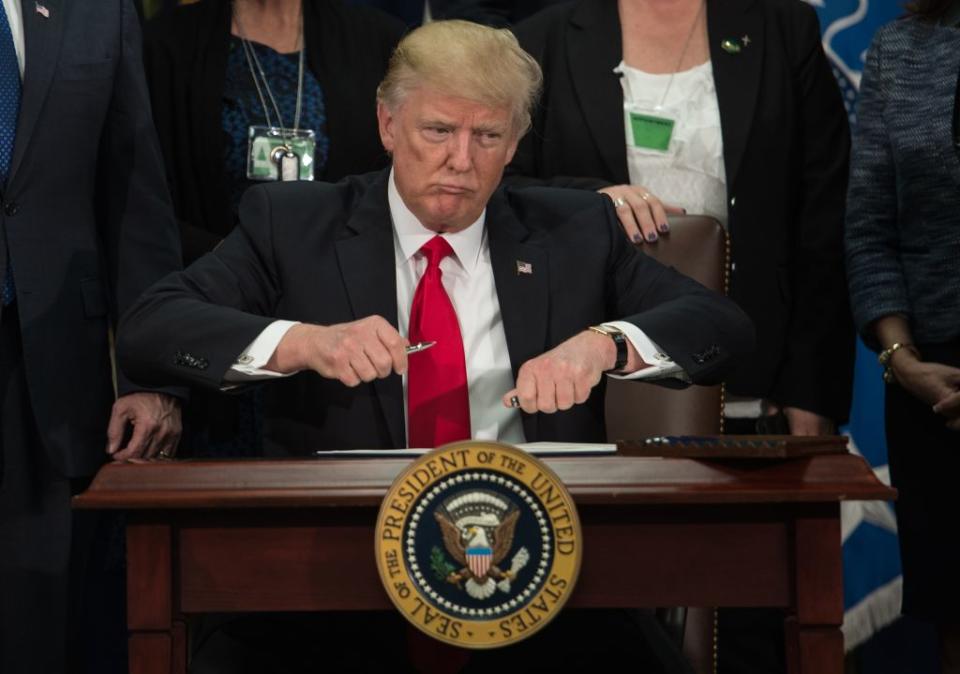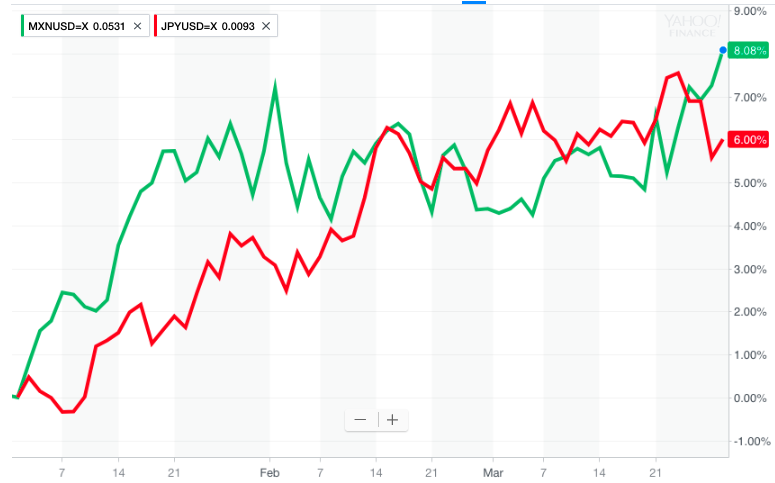The Mexican peso has been the strongest currency this year

In a repeat of the way it began 2017, the Mexican peso has been the strongest performing currency in the world so far this year.
The peso’s strength has been owed largely to positive expectations about the resolution of the North American Free Trade Agreement (NAFTA), but also to lessening fears about U.S. President Donald Trump and the negative effects his policies could have on Mexico, analysts said.
U.S. authorities have reportedly backed off of a major sticking point in NAFTA negotiations – a demand that all vehicles made in Canada and Mexico for export to the U.S. contain at least 50% U.S. content, according to the Globe and Mail.
The following day, U.S. Trade Representative Robert Lighthizer, during congressional testimony on March 21, said a “great deal of progress” has been made on NAFTA. However, he also noted that there is still “a ways to go.”
That apparent spirit of progress has lifted the peso (MXN=X) more than 8.1% so far this year against the U.S. dollar as investors have begun to doubt that Trump will rip up the trade accord if major concessions are not given to the United States, as some had previously feared.
For comparison, the Japanese yen (JPY=X), the strongest performing currency against the dollar among the world’s 10 largest economies, is up just 6.0%.

“Not too long ago many people viewed NAFTA as being on the operating table and in need of CPR, you know, it was dead on its feet,” said Shaun Osbourne, currency strategist at Scotia Bank in Toronto. “The shift from the U.S. perspective on this front has been quite swift and may hint that the desire to get something done fairly quickly here, which would be positive shock.”
Osbourne also noted that the about face from the United States seems to show a desire to sign a deal before the Mexican presidential elections in which left-wing candidate Andres Manuel Lopez Obrador is currently leading in most polls. Lopez Obrador has been a fierce critic of Trump’s, and his policies have been compared by critics to those of former Venezuelan President Hugo Chavez or Bolivian President Evo Morales.
Stoking optimism that a sweet deal for Mexico on NAFTA is more likely than not was the exemptions Trump made for Canada, Mexico and most other U.S. allies to his steel and aluminum tariffs, said Juan Perez, currency strategist at Tempus Inc in Washington.
The dollar sank nearly 16% against the peso between Trump’s inauguration and its low point in March as fears began to subside about his campaign trail rhetoric. NAFTA negotiation fears stoked the greenback up to nearly 20 pesos per dollar in late 2017, but it has fallen precipitously since.
While Trump made quite a stink about Mexico as a presidential candidate, Perez noted, his real target as president appears to be China.
“Look at, for example, what happened with these tariffs,” he said. “Little by little it becomes clear that Trump is just trying to create a point of leverage against China to tilt the power towards [the United States].”
—
Dion Rabouin is a financial markets reporter for Yahoo Finance. Follow him on Twitter: @DionRabouin.
Read more:
Investors returned to risky emerging markets assets in March despite trade war fears
China may be doing more to reduce its trade surplus with the U.S. than Trump
Follow Yahoo Finance on Facebook, Twitter, Instagram, and LinkedIn.

